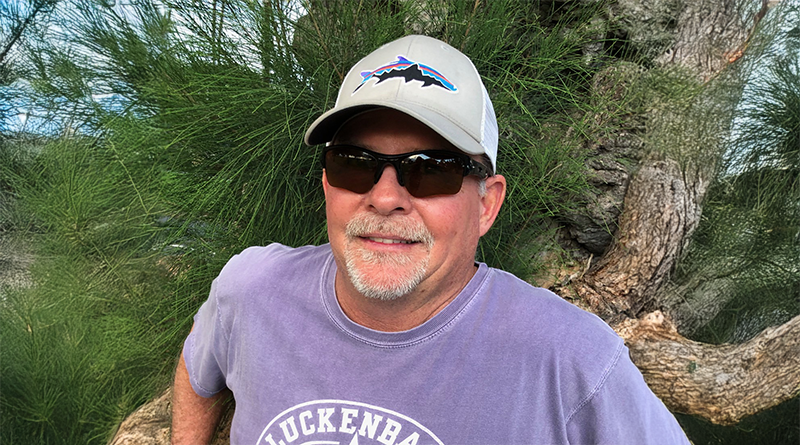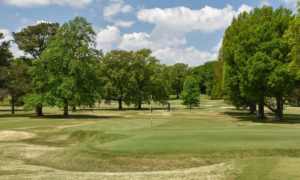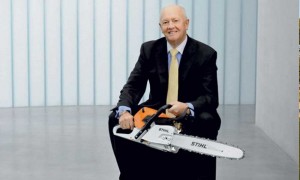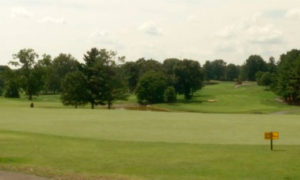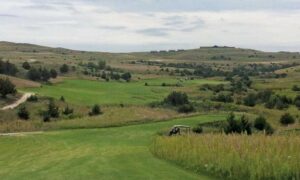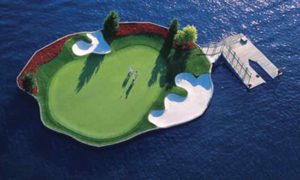This column features recollections of the author’s 37 years as a golf writer. These installments stem from his many travels and experiences, which led to a gradual understanding that the game has many intriguing components, especially its people.maui
There’s not much argument that course architects are creative people blessed with varied skills. After all, they must imagine how to turn a raw chunk of land into a beautiful and fair place to play golf while incorporating such disparate elements as turf, drainage, water features, irrigation, cart paths, trees, landscaping and shapes of greens, tees, and bunkers.
In many cases, they must fit these cultivated green spaces into larger projects with homesites, roads, clubhouses and other elements. On top of that the finished product must appeal to, and challenge, all kinds of golfers.
I’ve met and interviewed many golf course architects over the years and found almost all to be artistically proficient. Among them are Robert Trent Jones, Jr., a poet and published book author; the late Mike Stranz, whose imaginative courses revolutionized what 18 golf holes could look like; Robert Cupp, a novelist and co-author – with noted journalist Ron Whitten – of an important book on golf architecture; Northwest-based architects Dan Hixson and John Harbottle III, whose doodling of golf holes in grade-school evolved into successful careers.
Along with a creative streak, golf course architects must have the mental bandwidth to be versed in mathematics, drafting, geology, hydrology, horticulture and assorted other sciences. They all, in their own ways, virtuosos.
This installment of “Making the Rounds” focuses on golf course architect, Mark Miller, whose creativity also stretches into music and children’s books. Here’s my Q&A with the Coloradoan, who I befriended when he lived in Seattle while working on several area golf projects.
Jeff Shelley: Where were you born? Please note parents/siblings and where you fit age-wise in the family.
Mark Miller: “I was born in Lubbock, Texas, where I ended up going to college. My father was completing his degree in Parks and Recreation Administration there. We then moved to Orange, Texas, where he landed his first job in his field. We moved to Boulder, Colo., in 1961 when I was 4. I am the oldest of four kids – two brothers and a sister. We moved to Fort Collins, Colo., in 1969. My family (mother, brother and sister) still live there, and I consider FC my hometown.
“My mom is from Ronan, Mont., and my dad from San Angelo, Texas. In 1955, they were both working summer positions at Yellowstone National Park and that’s where they met. Our family would travel to Montana each summer to see my grandparents and always go through Yellowstone. In 1970, my dad took a summer ranger position at Mammoth Hot Springs, and we lived there all summer. It was the best summer of my life. We were always outdoors doing something – fishing, hiking, climbing mountains, visiting all the Park sites, calling coyotes at dusk, playing in hot springs, floating creeks and rivers in our innertubes, and camping.”
JS: Please reflect on any experiences as a youngster that led you to become interested in becoming a golf course architect.
MM: “At age 12, I was introduced to golf by my grandfather in western Montana. He played at Polson Bay Golf Course and had a cart, which made it even more fun for me. I fell in love with the game and spent many summers playing lots of golf with friends back home. I was too young to know, or consider golf design really, but I loved being outdoors and playing the game, so that was the beginning.”
JS: Where did you attend college/university and what was your major? Did you go to school based on becoming a golf course architect, or did other educational or work experiences influence your ultimate career?
MM: “After a year at Colorado State, majoring in music and journalism, I dropped out for a year. This was a period with the worst jobs I ever had. I was a car washer, steel factory worker (where I almost lost a leg and some fingers), an assembly line worker and a grunt on a construction crew. These experiences convinced me that I had to get serious. Thank God I had great parents who supported me in every way. I told them I needed to get out of Fort Collins and maybe go to school in Texas. My Dad had me on a flight the next week to check out Texas A&M and Texas Tech. I decided to major in Landscape Architecture at Texas Tech. It was the first best decision I ever made in my life.
“During our senior year we had a golf project that involved a field trip to the great Colonial Country Club in Fort Worth. The famous and talented golf course architect, Jay Morrish, was working on a remodel there that week and spoke to our class at dinner one night. He invited everyone to walk the course with him the next day to learn about golf course design. The next morning, I was the only one who showed up. So, I had a private tour with one of the greats.
“Looking back, that was a huge milestone in my life. I didn’t really know it at the time, but I remember him explaining why golf features (mounding, bunkers, water, etc.) were there with intention. I came out of that meeting with a new knowledge of golf-hole strategies, green design, bunker shapes, and never looked at golf the same way afterwards.”
JS: After graduating, what jobs did you have, including non-golf? Please list companies, responsibilities, length of employment, job title(s) and memorable experiences.
MM: “My first job was working as the grounds’ maintenance supervisor for a Texas Instruments plant in Lewisville, Texas. I lasted about a year. It just wasn’t a good fit. It paid well, but realized that I wasn’t using my design skills, plus I missed Colorado, so I quit and moved back to Fort Collins. Right away I landed a job with the Colorado Department of Parks and Outdoor Recreation in Denver as a park planner. This gave me the design work I was looking for. But driving an hour and a half to Denver every day wasn’t working so I decided to start my own landscape design and construction business, Choice City Landscape Design and Construction (Fort Collins is known as ‘The Choice City.’)
“My good friend, Robin Phillips, and I formed a partnership. Over a six-year period, we built Choice City Landscape Design into the busiest and best landscape design and construction business in town (in my opinion). Our timing was right as FC was booming. In the late ‘80s, however, the economy started slipping and competition got tougher, so I decided to get out of the business and put my education to better use.
“One day I decided to go to the library (this was way before the Internet) and looked up Landscape Architecture firms to contact. Remember how big the yellow pages were back then? I laid it on the table and began flipping through. The very first page that opened was Golf Course Architects. A big bell gonged in my head, and I thought, ‘That’s it, golf course architecture, I can do this!’
“I remember being out of my mind with excitement. The first thing I did was set up a meeting with well-known Colorado golf architect Dick Phelps. He couldn’t hire me, but he told me to get the list of architects from the American Society of Golf Course Architects, so I did just that, and wrote to all of them . . . about 100 across the U.S. and Canada. I ended up getting three offers. Two were in the Chicago area, and one was with the multi-disciplinary resort-design firm of Belt Collins & Associates in Honolulu. To me this was a no brainer – Honolulu it was! I felt like I’d won the lottery. That was the second-best decision of my life.”
JS: Who were some of your mentors? Please explain how/why these people were so influential?
MM: “The biggest influence was my grandfather for introducing me to golf. My greatest mentor is my father. He loved the outdoors and showed me by example that you could have a career in something you love to do. You just need to find out what that is and pursue it. He always supported me in everything I did and encouraged me when I didn’t know which path to take.
“I’ve had other people who’ve influenced me along the way, but none compares to my first two bosses in golf course design: Rodney Wright and Robin Nelson (our firm was then called Nelson and Wright, a subsidiary of Belt Collins). I was a rookie when I started working for them, but I couldn’t have had two greater guys to learn from. My apprenticeship was short and sweet, and they then threw me into the fire.
“We were so busy, at one time we had over 40 golf projects on our books at once. About half were in the Hawaiian Islands and the other half were overseas in Pacific Rim countries. I also must include Tom Shapland, who was the head of Wadsworth Golf Construction during my time in Hawaii. He taught me a lot about the construction side.
“One memory I have of Tom is when I was just getting started and had designed a green for Honolulu Country Club. He had his guys build it exactly as I designed it. He then called me out on a Saturday, his day off, to meet me at the job site and spent time showing what I had done wrong and how to improve my skills. I played a lot of golf with these guys (lost a lot of money to them too) and can attribute almost everything I know to those early days learning from these outstanding gentlemen. I was just so lucky to have started with them.

“I traveled to many Pacific Rim countries, designing and building new golf courses in China, the Philippines, Thailand, Singapore, Malaysia, Guam, Saipan in the Mariana Islands, Bali and Indonesia. Many are award-winning and have unique stories. One came when we were working on the newly acquired Mimosa Golf Club in the Philippines. I had the privilege of working on the remodeling and expansion of this course over several years in the 1990s.
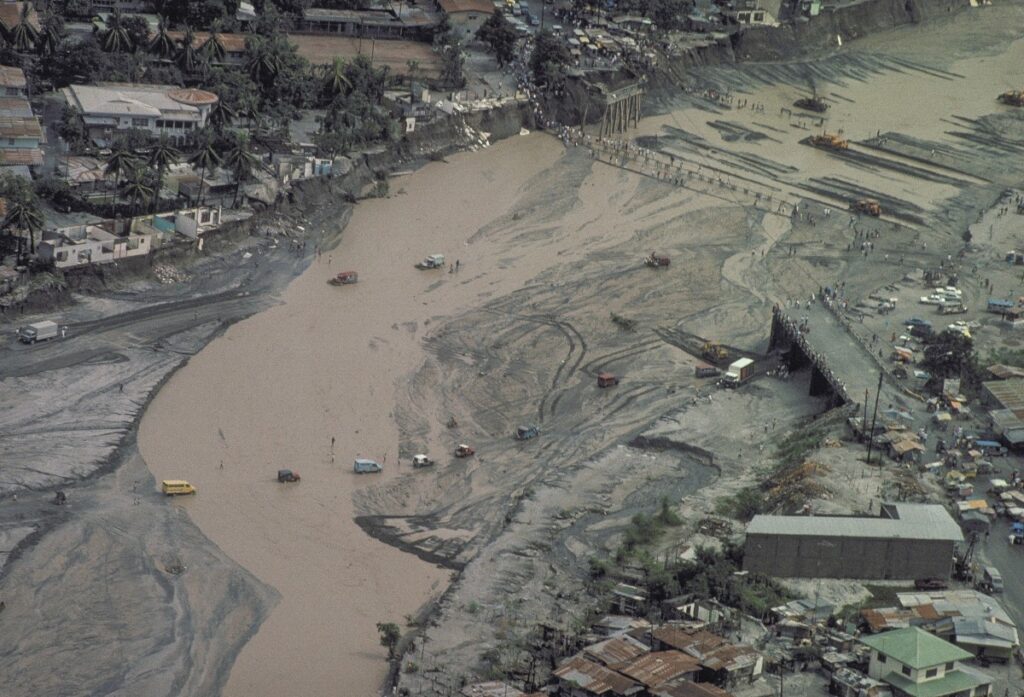
“It was originally an 18-hole golf course on the U.S. Clarkfield Air Force Base. The Mount Pinatubo volcanic eruption in 1991 covered the area in ash and lahar. After the U.S. vacated the base, a private resort developer transformed the area into the highly regarded Mimosa Resort (now called Mimosa Plus Golf Course). Our team was hired to renovate the original course and add 18 holes, making it a 36-hole resort.
“One outstanding memory I have is playing the original course prior to the remodel. Although the ash had been pushed up in piles on the sides of fairways, it was still in the grass. Every time you hit a shot it was like a giant explosion and ash would fly everywhere, which made for a hilariously entertaining round of golf. We were all covered in ash from head to toe by the end of a round.”
JS: How many years have you been a solo golf course architect and what projects have you worked on? Please include names and locations of the courses, opening dates, co-designer credits, and any details/anecdotes/memories you wish to share. Also note projects that you’re particularly proud of.
MM: “I started with Belt Collins in 1989 and established Miller Design in January 1999, in Seattle. I have mostly focused on golf course remodeling projects for country clubs, municipalities, the military and private resorts. A new golf course project occasionally comes along. Here are a few of the new golf courses and the larger remodeling projects done under Miller Design:
Leilehua Golf Course – Oahu (https://hawaii.armymwr.com/programs/leilehua-golf-course) – “A favorite project on a treasured old-school Hawaiian course. Upcountry, cooler climate and huge specimen trees. A full 18-hole remodel including new greens, bunkers, tee complexes, full-length cart paths and removal of approximately 150 trees. Considered at the top of the 150-200 courses owned by the U.S. military worldwide.”
Fort Belvoir Golf Course – near Alexandria, Va. https://belvoir.armymwr.com/programs/golf-club) – “Due to a land acquisition that would remove parts of a 36-hole golf course, this involved a major realignment. Remodeled 10 holes, added three new holes and a major bunker renewal throughout. Also considered among the top military courses worldwide.”
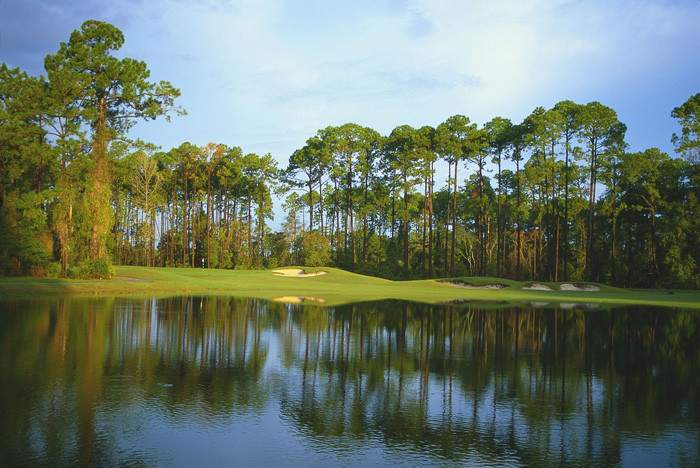
Casa Linda Oaks Golf Course, Jacksonville, Fla. (https://www.navymwrjacksonville.com/programs/aba92c5f-f210-4888-bfb0-5c356b2f81a8) – “Existing 18-hole course at NAS Jacksonville started as a design competition by U.S. Army MWR [Morale, Welfare and Recreation] to add nine holes and remodel part of the existing course. While at Nelson and Wright, I submitted the plan and won the competition. Before starting, however, I decided to go on my own as Miller Design, and Nelson and Wright hired me as a consultant to make this my first large project. Lessons learned included how to design a course in Florida, where the water table is merely 12” below the surface. Lots and lots of lakes and waterways incorporated throughout the course.”
Valley of the Eagles Golf Course, Haines, Alaska. (https://www.hainesgolf.com/) – [Miller speaks here to the author: “I know you’ve been here” – see Jeff Shelley’s story here: https://golfcoursetrades.com/making-the-rounds-part-6/]. “This was one of the most interesting projects and a favorite story. It began when Dr. Stan Jones came to my Seattle office with aerial photos and maps. Stan was a popular local MD who recently retired. He owned some waterfront acreage in Haines and wanted to develop a golf course on it. I told him this wouldn’t work as the site was considered a wetland due to high tides.
“Dr. Jones didn’t take no for an answer and asked me to look at the property. When I arrived one afternoon, he said my timing was perfect because that night would be one of the highest tides of the year. At 1:00 a.m. we went to the site. He had a flashlight, and a canoe tied to a fence. We got in the canoe and paddled around. He’d point at the water and say ‘OK, right here is where the first green should be.’ I thought he was nuts, and didn’t know whether to laugh or be horrified.
“We waded in knee-deep water to ‘see’ where fairways should go, etc. It was my weirdest experience ever in this business. Next day we went back out and the site was totally dry. The tide had receded, and I could see what he was so excited about. I was too.
“Anyway, we sent a letter to the state of Alaska assuring them this would be the most environmentally friendly golf course in the world: no irrigation system, no pesticides, fertilizers or chemicals. All that was needed was to move a little dirt to build up the greens and tees, build a few bridges, and plant native grasses that would grow naturally and serve as the turfgrass. Surprisingly, they gave us permission to proceed.
“I think this nine-hole links is one of the world’s most unique courses. It’s right beside the mighty glacier-fed Chilkat River, with snowcapped mountain ranges reaching into the sky, and has the world’s densest bald eagle population. While playing golfers are constantly aware of these surroundings, hoping a moose or a brown bear might show up, just not too close. Another unique element is that the site rises 4 to 6 inches a year due to a phenomenon called isostatic glacial rebound. As glacier/ice melts upstream, pressure is released on the land. One of the most unique experiences of my life and certainly one of the most beautiful places for golf.
“Because the course is inundated by super high tides about twice a year, and no fertilizers were permitted, the original greens were built with artificial turf. The course was recently purchased by Clayton Jones (no relation to Stan). He’s since removed the artificial greens and planted natural greens, which have grown in well. This is currently a nine-hole public golf course, and Clayton is considering adding nine holes in the future. We’re talking about improvements to the course this summer (2025).”
Qixianling Golf Club, Hainan Island, China (https://www.sunnyhainan.com/tours/qixianling-rainforest-golf-club-baoting-hainan-island/) – “Opened in about 2010, the routing was by a local Chinese landscape architect. After construction began, it quickly became apparent that the design had some major flaws, and the project was about to be shut down by the local government. I was hired to visit the site, redesign the layout, and spend time onsite with contractors to realign holes, make major grading changes, relocate the features (greens, tees, bunkers, cart paths, lakes and waterways, etc.). I also presented all this to the local government so they wouldn’t shut the course down. I am credited with the course design.”
The Links at Kiley Ranch, Sparks, Nev. (https://www.kileyranchgolfclub.com/) – “Slated to be an 18-hole golf course called Spanish Springs with a nine-hole par-3 course. I worked with the World Golf Hall of Fame member Patty Sheehan on both. We designed both courses, but only the par 3 was built. It’s links-style, very popular in the area, with mountain views, and designed for beginners. Each hole features a golf hazard found on a full-sized course, with bunkers, trees, waterways and lakes, high mounds, hidden greens and pot bunkers. It’s a great little layout.”
Courses Miller Designed with Nelson, Wright & Haworth
Mimosa Golf and Country Club (now Mimosa Golf Plus), Philippines (https://mimosaplusgolf.com/) – See above.
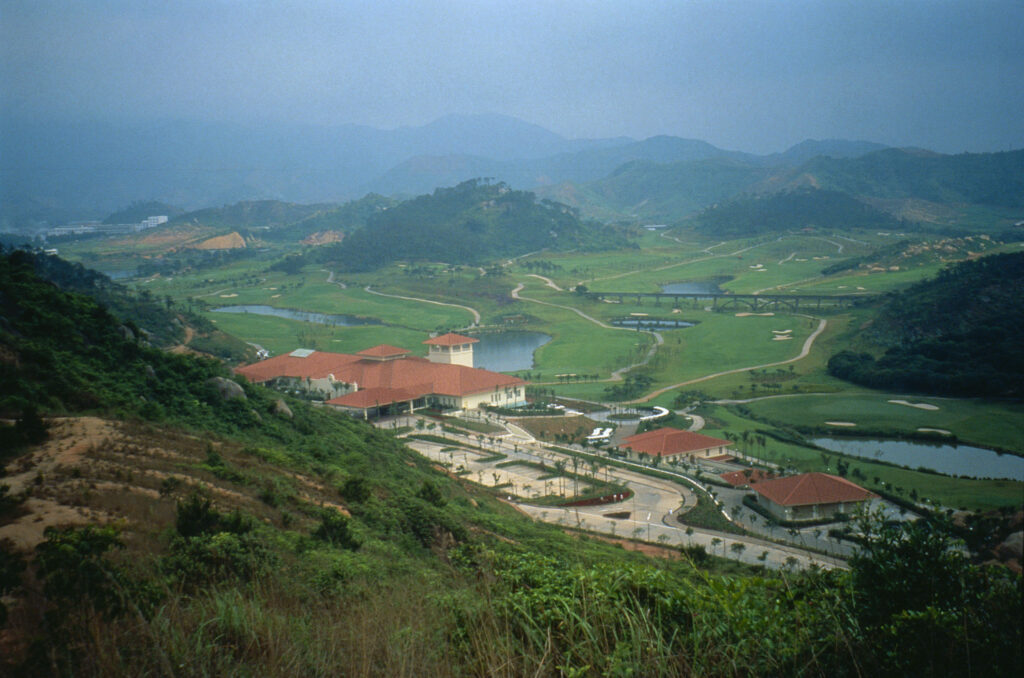
Shenzhen Xili Golf and Country Club, Shenzhen, China (http://xiligolf.com/) – “Private 36-hole facility routed around lakes and over granite peaks with some tough tee shots. One hole drops over 150 feet from tee to fairway. As lead architect, I made 24 trips to the site during two years of construction. The course is owned by Robert Kuok, owner of the Shangri La Hotels, among other ventures, and known as the richest man in Malaysia.
“One quick story. His son Bo Kuok ran this golf project and was known as a tough cookie in meetings. One day I was invited to a meeting at their Hong Kong office on something like the 60th floor. There were six other consultants – architects, engineers, etc. – along with me. Each of us got up and presented our updates to Bo. He’d start yelling as each one presented, firing them one by one. As I watched them leaving the room I thought to myself, ‘I might as well just walk out now.’ But somehow, I survived the wrath of Bo Kuok. He didn’t fire me and commented that he was glad I was prepared. Whew!
“In a related story, while in Hong Kong on a trip, another group asked if I would postpone returning home and look at their property for a new course. So, I said yes, of course. That night they took me night golfing on a lighted course. Then dinner and a site visit the next day. Then lunch.
“I noticed a funny-looking old man riding with us everywhere we went. Maybe it was because he had the facial mole with long hair growing out.
“Before heading home, I mentioned that I had not been formally introduced to this guy. They said I wasn’t supposed to meet him. He was a shaman witchdoctor hired to just watch me and everything I do, and report back to them. Apparently looking to see if I was honest, intelligent, weird, absentminded, good-natured, whatever. Business over there was always very interesting and you never knew what to expect.”
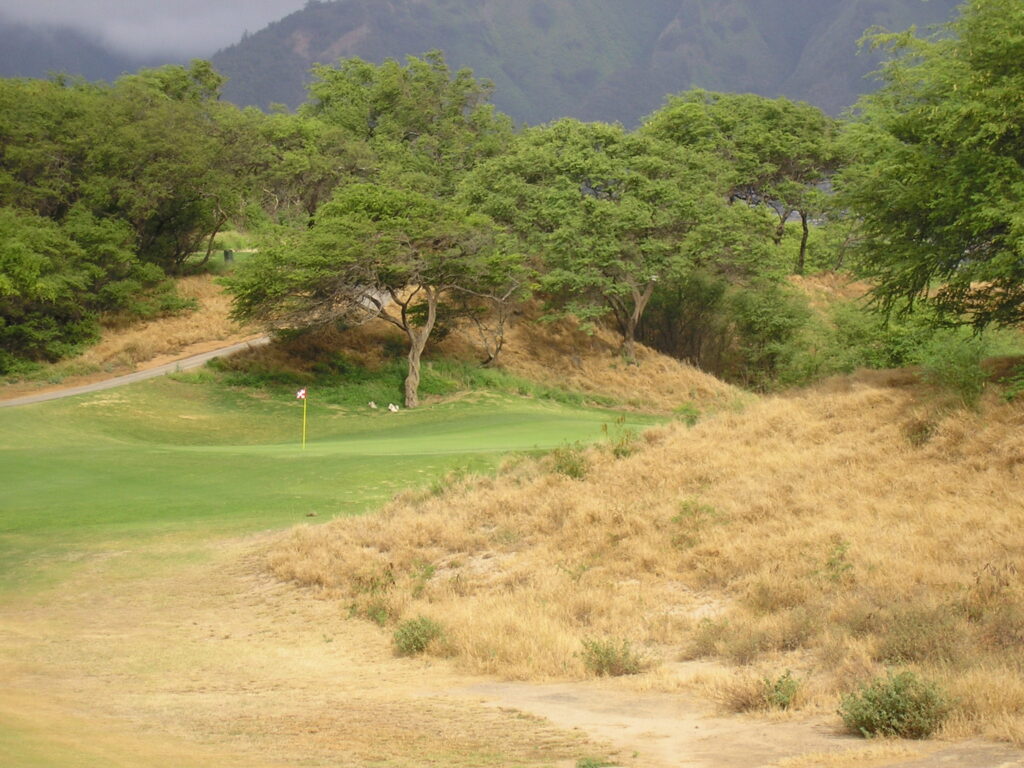
The Dunes at Maui Lani, Maui (https://dunesatmauilani.com/) – “Part of a residential development, this true Hawaiian links routes through native dunes and Kiawe forests. I served as lead architect. Another favorite story was the clearing of Kiawe trees, which are like mesquites in the continental U.S. and used in Hawaiian barbeques. They’re also covered with thorns. The contractor cleared the centerlines for each hole and left piles of Kiawe trees on both sides. It was our duty to walk the centerline and measure out to where the real clearing limits were to be, and tie orange tape to the trees as guides.
“This meant [partner] Robin and I climbed over fallen trees covered with thorns to get there. After a day of getting stabbed, gouged and cut up, we had the genius idea to buy paintball guns and shoot the trees with orange paint to mark the edges and avoid further pain. We went to every store on Maui stocked with paint balls and bought them all. The next day we completed the 18 holes with our newfound method. It worked like a charm, and we were proud of turning lemons into lemonade. We left the island on Friday thinking our work was done. The only problem was it rained hard for two days . . . and our work was washed away. I was back there alone on Monday.”

Royal Kunia Country Club, Oahu (https://www.royalkuniacc.com/) – “Scenic 18-hole golf course offers views of Pearl Harbor, downtown Honolulu and Diamond Head Crater from every hole. Since it was built over a fallow sugarcane field, we incorporated this tall-grass theme (sugarcane-style) throughout. We were also allowed to kind of go crazy with the bunkering, so there are some amazing complexes backdropped with tall grasses. It was also designed to serve as a major flood-control and containment area in case of a 100-year storm. We put some massive holding areas into the design that golfers don’t notice unless they’re pointed out. As lead architect, for about a year I met weekly with the engineers to make sure all of this worked in harmony.”
The Dragon Golf Course at Nakoma Resort, Clio, Calif.(https://nakomaresort.com/golf/) – “This is in remote northern California about an hour from Lake Tahoe. Offers great mountain vistas, and has tees and fairways lined by ponderosa pines. A co-design with Nelson. The owners were a husband-and-wife team who bought the rights to a Frank Lloyd Wright-designed, but never-built, clubhouse in Wisconsin and brought it to life here. That makes the development even more special.” [The author spent three nights soon after The Dragon opened; here are his Cybergolf stories from 22 years ago: https://golfnewsstoriesonline.com/news/all/golf_news/october_22_2003_tale_of_the_dragon_part_1.html; https://golfnewsstoriesonline.com/news/all/golf_news/october_22_2003_tale_of_the_dragon_part_2.html; https://golfnewsstoriesonline.com/news/all/golf_news/november_6_2003_tale_of_the_dragon_part_3.html]
Puakea Golf Course, Lihui, Kauai (https://www.puakeagolf.com/) – “Tropical 18-hole golf course has everything from ocean views to dramatic topography. The original course was half-built when it was devastated by hurricane Iniki in 1992. It took a few years for the island to come back and the course to be finished. I was co-designer with Nelson on this course, which has received multiple awards.”
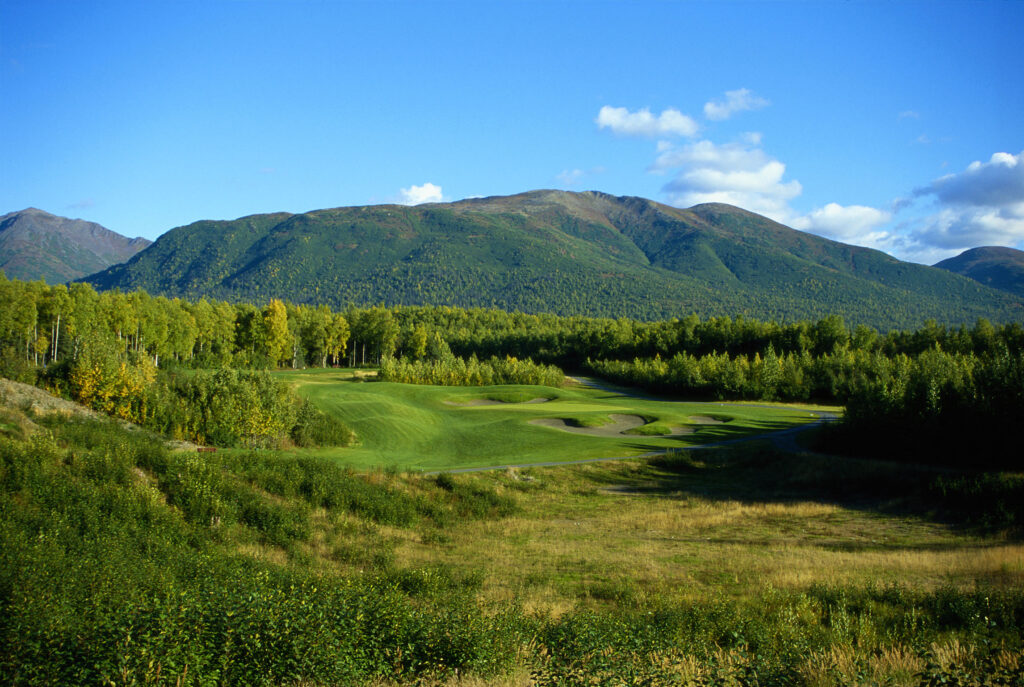
The Creek Course at Moose Run, Anchorage (https://www.mooserungolfcourse.com/) – “Collaborated with Nelson on an 18-hole expansion of the original Moose Run Golf Course after we earned the MWR competition. New holes run through rolling indigenous forests with Shipp Creek as the centerpiece. Proposal involved a golf architect pairing with a contractor, submitting a design/build proposal showing the proposed layout, and providing costs. My parents were living in Fairbanks at the time, so I jumped at the chance to try to win the project. We teamed with Goodfellow Brothers, a civil contractor on Maui that built many courses in the Hawaiian Islands. We routed some holes in and around abandoned gravel pits on a part of the site. Our concept of reclaiming these pits, among other factors, helped us win the project. Known as one of the best military courses worldwide and has received multiple awards since opening in 2000.”
For more information about Mark Miller, visit https://millerdesigngolf.com/.
Jeff Shelley has written and published 10 books as well as numerous articles for print and online media since 1987. Among his titles are three editions of the book, “Golf Courses of the Pacific Northwest.” The Whidbey Island resident was editorial director of Cybergolf.com from 2000-15, co-founder of the Northwest Golf Media Association and president of the nonprofit First Green (https://www.thefirstgreen.org/). To contact Jeff: fairgreens@seanet.com.

